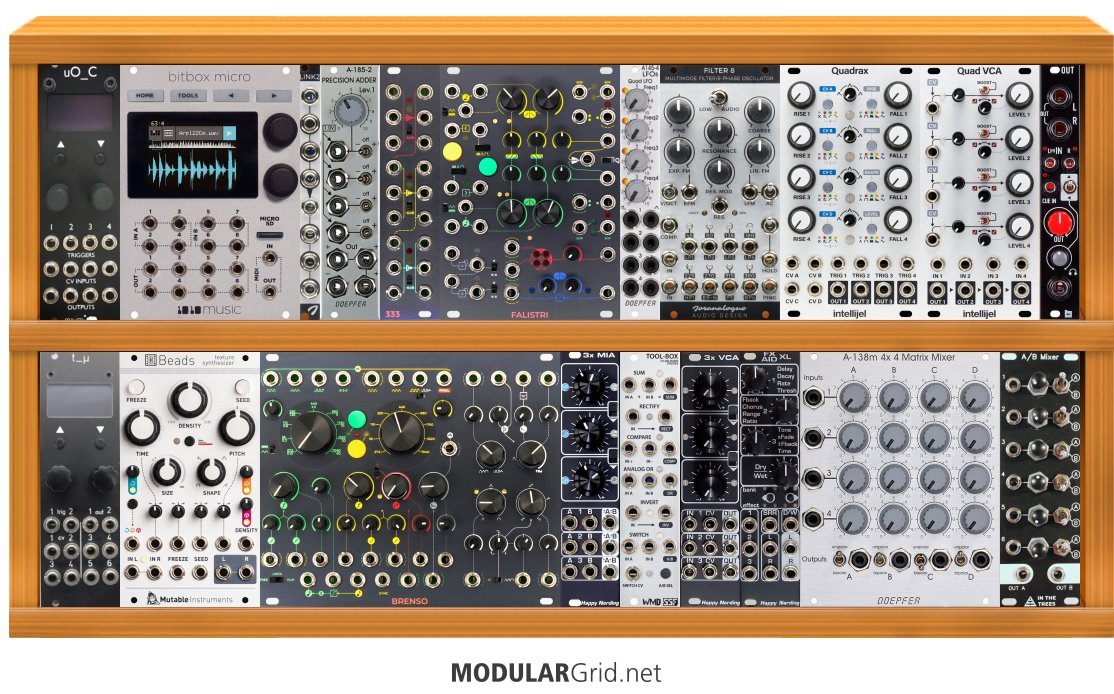whilst the mantis is a brilliant case and really quite reasonably priced, especially compared to other cases that were around when (and since) it was launched, building a case is a great idea and can save a little money - if you can use a saw, a drill and a screw driver then they are, at their most basic, incredibly easy to build - I should know I've built 4, so far! my average build time is a couple of hours, so I wouldn't really call it a project, as such, but then I don't really bother sanding, staining or varnishing etc
88 & 114 hp are weird sizes - ie not standard rails sizes are you going to use wood rails? - I've tried this and personally I wouldn't advise it - when using aluminium rails (and preferably threaded inserts - seriously much better than sliding nuts) it's much easier to stick to standard sizes!!
what power supplies are you considering - I like the befaco excalibus, myself - it's an easy but tedious DIY build and provides a decent amount of very clean power (clean enough for video which needs to be cleaner through much higher frequencies than audio - otherwise it is visible in the output)
as for 1u - as you are building your case yourself, you will come to appreciate that the cost of housing 1u modules in a row is identical to that of a 3u row - and there's really nothing compelling in 1u that can't be achieved with a 3u module, in a much smaller hp footprint, the only thing that 1u really does is save you 3.5" (8.9cm) from the height of the case
as you have more space - I would suggest getting rid of the micro versions of modules - their ergonomics sucks!
as you seem to be into open source, I would also suggest either to build yourself or to support the person who made them open source in the first place and not cloners, where possible (hint buy plaits, not knit)
Emilie is a truly fantastic person and deserves your money, way more than anyone who shrinks one of her modules to child size and I can assure you any product support that you do need will be excellent
almost all eurorack manufacturers are very small - other than the obvious evil that is the b-company I don't think many are more than 10 people:
Doepfer, outside Munich, is 4 - & Dieter "invented" the format
Mutable Instruments, Paris, is 1
for example (nb both of these outsource their production - Doepfer to China, iirc, and Mutable to a company in France
what are you currently using for mixing your existing instruments? you may not need the output module - if you desperately need headphones then I'd suggest something like the ALM HPO - which is made, kind of locally to the EU, in the UK
I'd probably also go for a fx aid xl instead of the milky way - Igor adds more and more algorithms to it - so it's significantly more versatile than the milky way - whilst being built on the same platform
I'd probably replace the pico filters, for the mostly same reason as the knit - poor ergonomics, better suited to children than adults - with Doepfer modules that are bigger and have more space - I have a pico seq - which is kind of annoying for this reason and also the lack of a reset jack (resetting is horrible and really requires space around the module to achieve) - I have other full size erica modules, both DIY and bought, and they are excellent
"some of the best base-level info to remember can be found in Jim's sigfile" @Lugia
Utility modules are the dull polish that makes the shiny modules actually shine!!!
sound sources < sound modifiers < modulation sources < utilities

